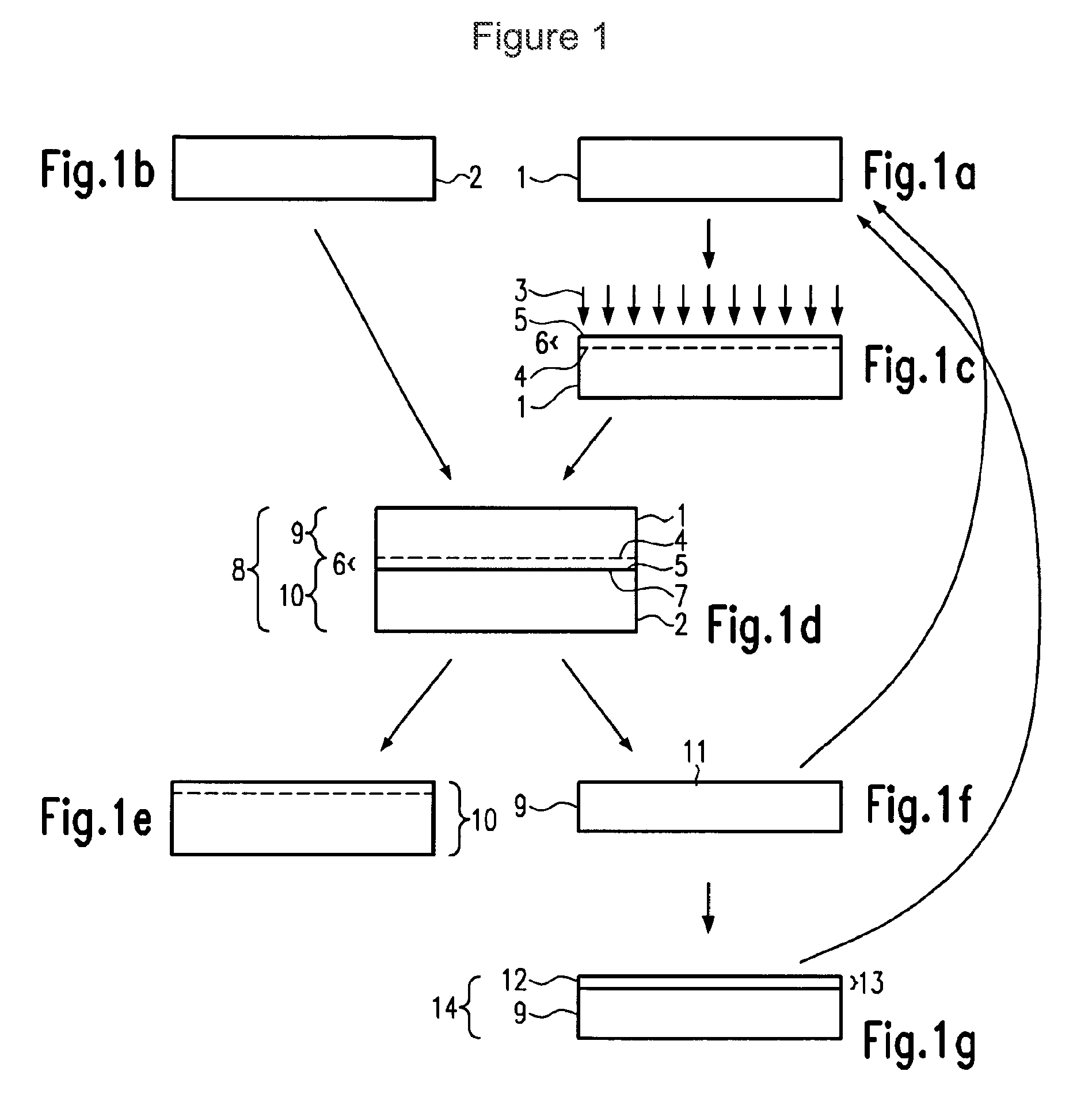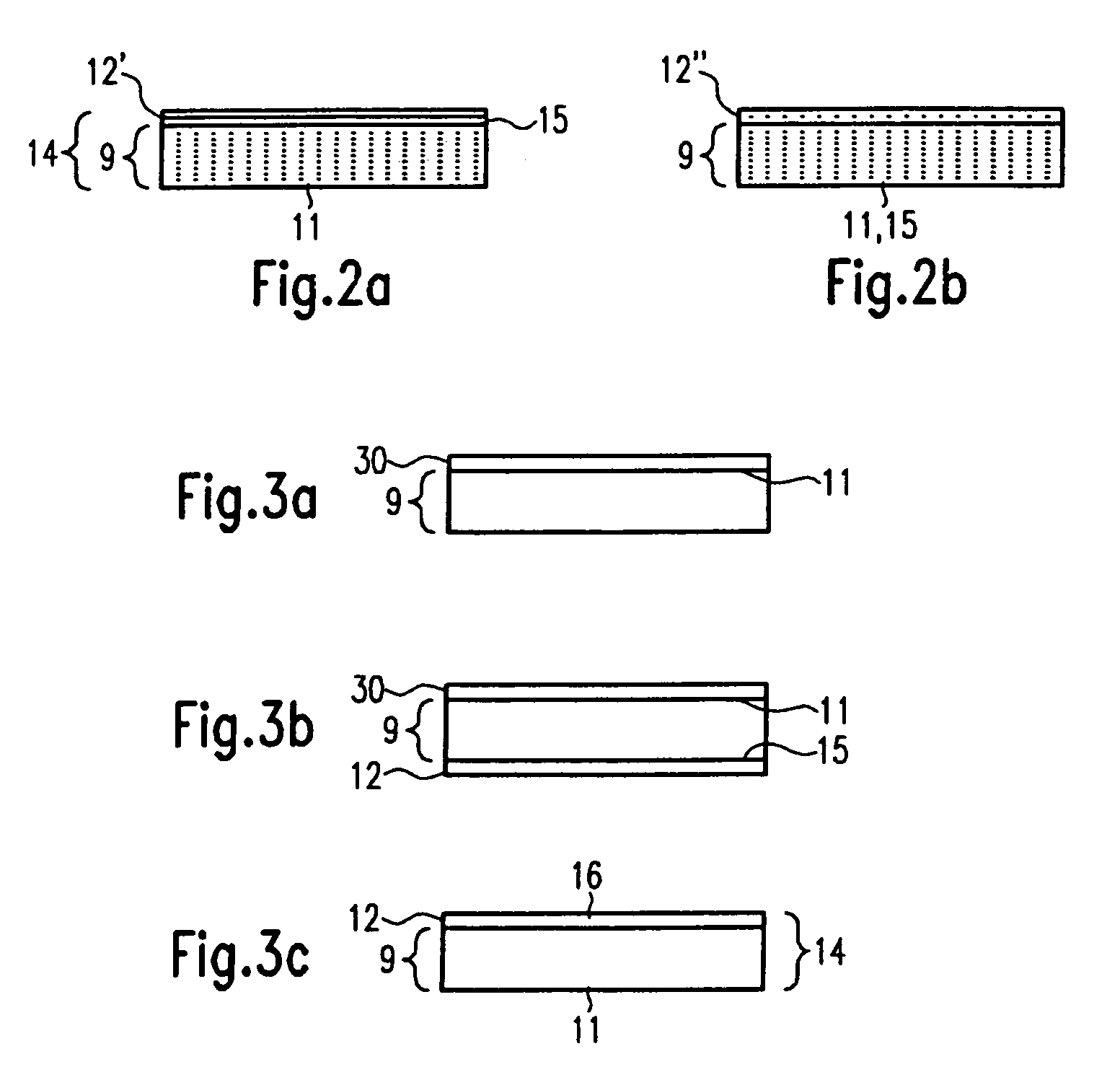Recycling the reconditioned substrates for fabricating compound material wafers
a technology of compound material and reconditioned substrates, which is applied in the direction of basic electric elements, electrical equipment, semiconductor devices, etc., can solve the problems of high cost of adaptive steps and added process costs by designed equipment, and achieve the effect of increasing thickness
- Summary
- Abstract
- Description
- Claims
- Application Information
AI Technical Summary
Benefits of technology
Problems solved by technology
Method used
Image
Examples
second embodiment
[0021]FIG. 3 illustrates the present manufacturing method in which the step illustrated in FIG. 1g is replaced by the process illustrated in FIGS. 3a to 3c. Corresponding elements and features shown in FIG. 1 have the same reference numerals, and are not explained again in detail; instead their description is incorporated by reference.
[0022]According to FIG. 3a, a protective layer 30 is deposited on the top surface 11 of the remainder substrate 9, wherein the top surface 11 is the surface at which detachment occurred. The protective layer 30 protects the top surface 11 against contamination or mechanical damage during further processing. Suitable protecting materials may include silicon dioxide or silicon nitride (SiO2, Si3N4).
first embodiment
[0023]In FIG. 3b, the layer 12 is deposited on the bottom or opposite surface 15 of the remainder substrate 9. This is identical to that illustrated and described with respect to FIG. 1g of the
[0024]FIG. 3c illustrates the removal of the protective layer 30. The reconditioned donor substrate 14 includes the remainder substrate 9 and the deposited layer 12, and is then reused as an initial donor substrate 1. Eventually, removal of the protective layer 30 can be accompanied by an additional polishing and / or cleaning step of the top surface 11.
[0025]According to a further variant, after the growth of layer 12 the surface 16 of the additional layer could be provided with a further protective film to protect this surface of the reconditioned donor substrate 14 during the process steps illustrated in FIGS. 1a to 1f.
[0026]The application of the present manufacturing method is explained below in detail using the example of a compound wafer having a GaN transfer layer. Variants described he...
PUM
| Property | Measurement | Unit |
|---|---|---|
| thickness | aaaaa | aaaaa |
| thickness | aaaaa | aaaaa |
| energy | aaaaa | aaaaa |
Abstract
Description
Claims
Application Information
 Login to View More
Login to View More - R&D
- Intellectual Property
- Life Sciences
- Materials
- Tech Scout
- Unparalleled Data Quality
- Higher Quality Content
- 60% Fewer Hallucinations
Browse by: Latest US Patents, China's latest patents, Technical Efficacy Thesaurus, Application Domain, Technology Topic, Popular Technical Reports.
© 2025 PatSnap. All rights reserved.Legal|Privacy policy|Modern Slavery Act Transparency Statement|Sitemap|About US| Contact US: help@patsnap.com



